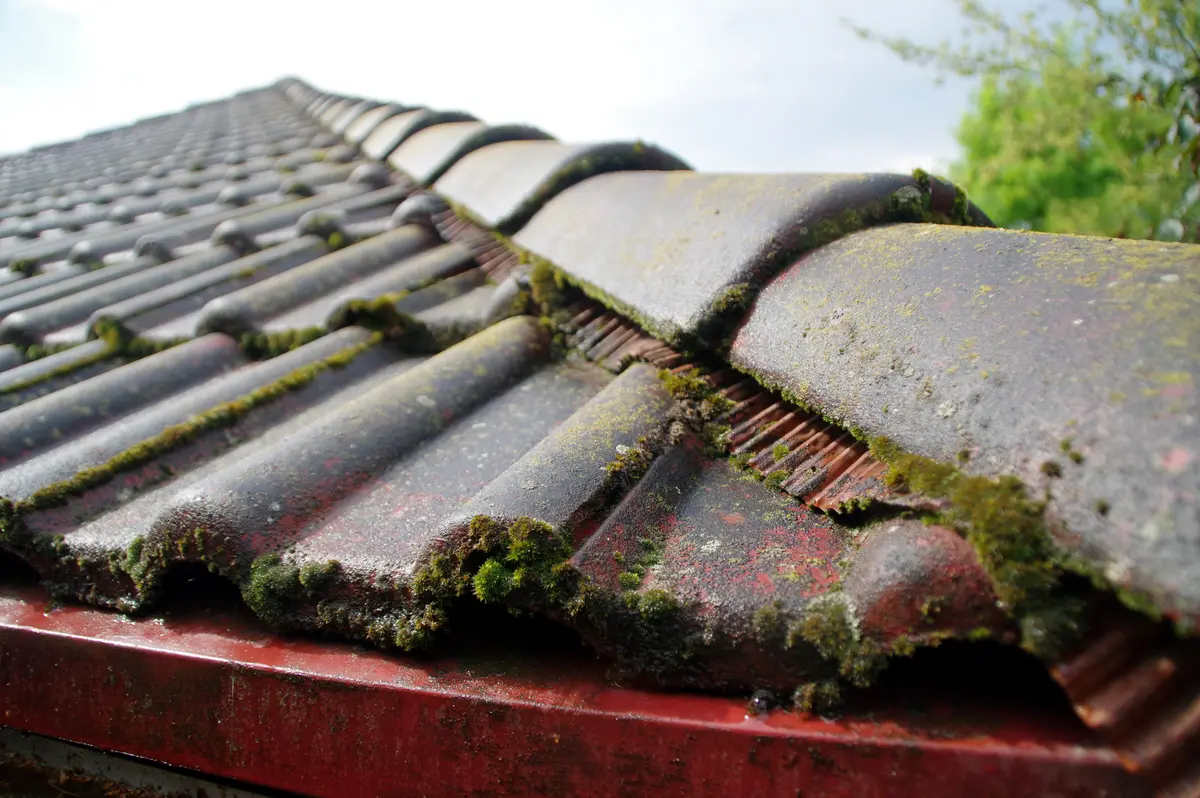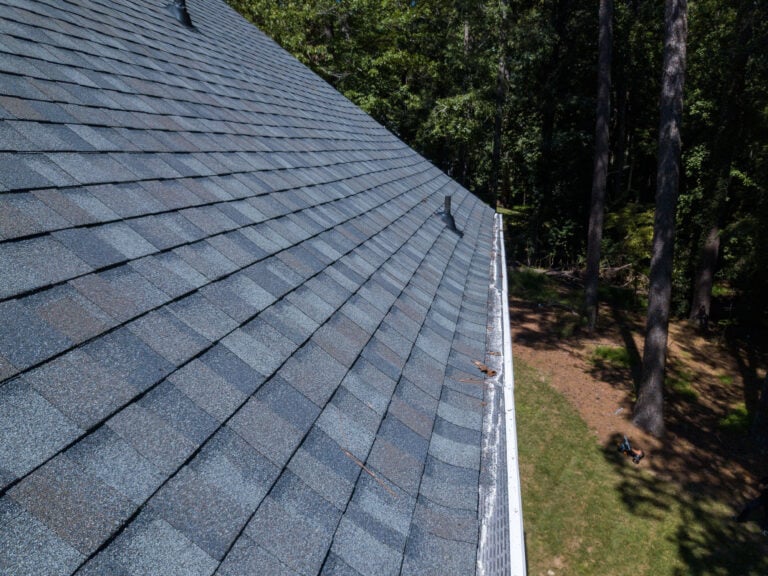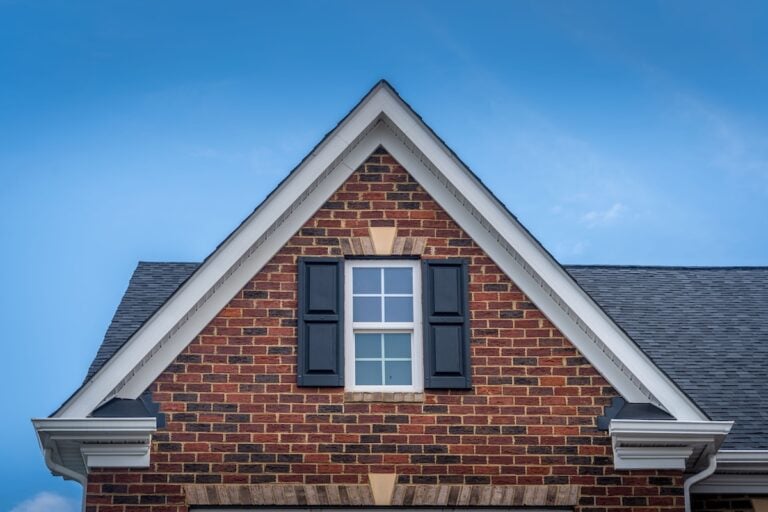Mold on your roof isn’t just unsightly—it can also lead to significant, costly damage if not addressed promptly.
For homeowners, keeping a vigilant eye on the state of your roof is crucial in maintaining the overall health of your home. We’re here to help with this detailed guide that will explore everything you need to know about mold on roof systems, including:
- How to identify it
- The causes
- The potential downsides
- Practical steps for removal and prevention
Signs of Mold on the Roof
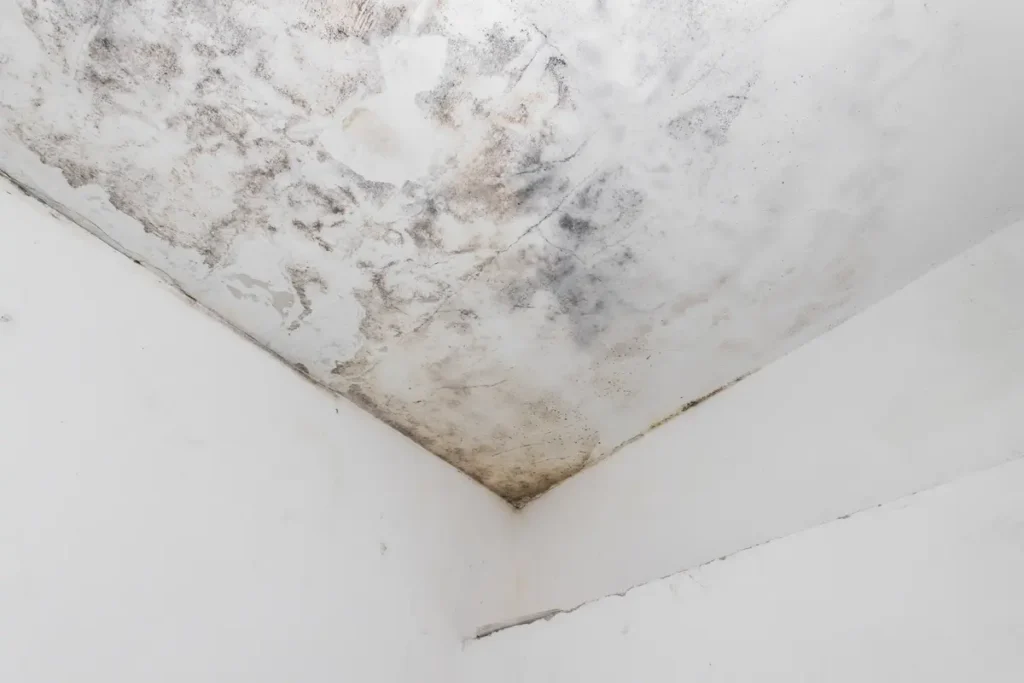
Identifying mold early is key to preventing extensive damage. Here are some signs to look out for:
- Discoloration: Mold often appears as black or dark green streaks or patches on your roof. These discolorations are typically more visible on lighter-colored roofs and might look like dirt or soot at first glance.
- Musty Odor: A strong, musty odor in your attic or around your home can be an indicator of mold. This smell results from the mold releasing spores into the air, which can spread throughout your house.
- Growth Patterns: Unlike dirt, mold tends to grow in irregular patterns, sometimes in circular formations. Look for these patterns where moisture accumulates, such as valleys or areas shaded by trees.
- Algae Growth: Sometimes mistaken for mold, algae can also appear as dark streaks on your roof. While different, both algae and mold flourish in similar conditions, meaning algae can indicate that your environment is conducive to mold growth.
What Causes a Moldy Roof?
Understanding what causes mold can help in preventing it. Here are some common factors:
💧 Moisture
Mold thrives in moist environments. Roofs that retain water due to poor drainage, leaks, or frequent rainfall are more susceptible to mold growth.
☁️ Lack of Sunlight
Roofs shaded by trees or structures are more prone to mold since they dry out slower, providing the perfect damp environment for mold to flourish.
🍂 Organic Debris
Leaves, branches, and other organic matter that accumulate on your roof can trap moisture and provide nutrients that support mold growth.
💨 Poor Ventilation
Without proper ventilation, moisture can become trapped in your attic space, creating a humid environment conducive to mold growth.
The Downsides of Mold on the Roof
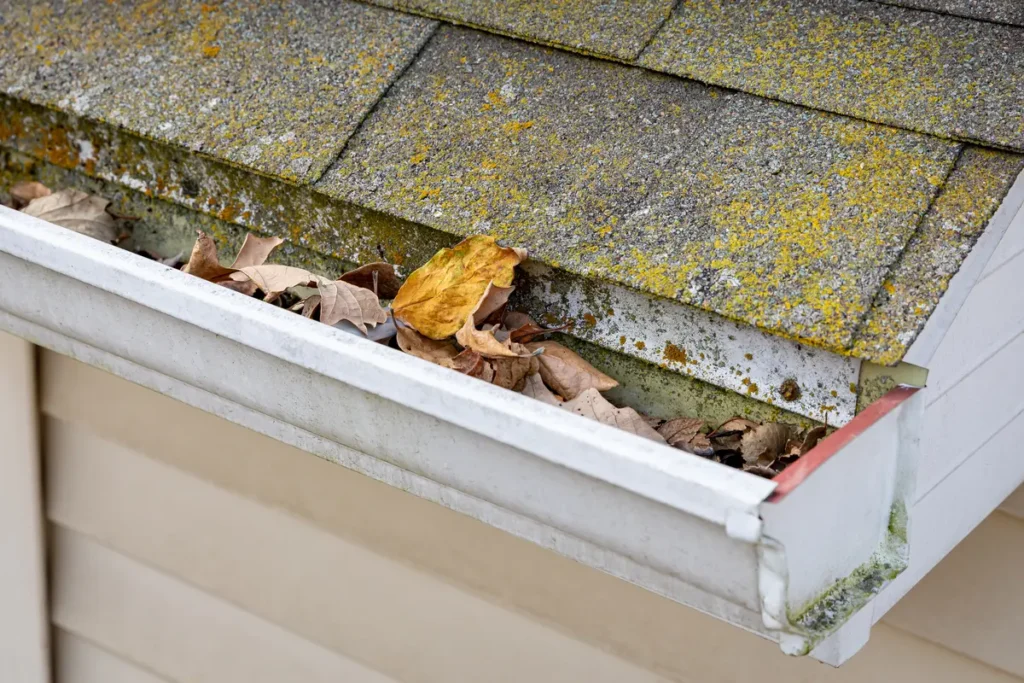
Allowing mold to remain unchecked can lead to several issues, including:
- Structural Damage: Mold can eat away at roofing materials, leading to weakened structures and potential leaks. Over time, this can result in significant structural damage that requires costly repairs.
- Health Risks: Mold spores released into the air can cause respiratory issues, allergic reactions, and other health problems, particularly for individuals with pre-existing conditions.
- Reduced Curb Appeal: Dark streaks and patches of mold are unsightly and can detract from your home’s curb appeal, potentially affecting its value.
- Decreased Roof Lifespan: Mold can degrade roofing materials, reducing the lifespan of your roof and necessitating premature replacement.
How to Get Rid of a Moldy Roof: 4 Simple Steps
Removing mold from your roof can be straightforward if you catch it early. Here’s how:
1. Safety First
Always prioritize safety. Wear protective gear, including gloves, goggles, and a mask, to prevent any exposure to mold spores.
2. Roof Cleaning Solutions
Use a commercial roof cleaning solution or a homemade mixture of water, bleach, and detergent. Apply this to the affected area and scrub gently with a soft brush.
3. Power Washing
For more stubborn mold, power washing can be effective. Be cautious, as high pressure can damage shingles if done incorrectly.
4. Professional Help
If the mold is extensive, consider hiring a professional cleaner. They have the tools and expertise to remove mold safely and thoroughly.
How to Prevent Roof Mold
Prevention is always better than cure. Here are steps to keep your roof mold-free:
Regular Inspections
Conduct regular roof inspections, especially after heavy rain or storms, to catch potential mold growth early.
Trim Overhanging Branches
Ensure your roof receives adequate sunlight and airflow by trimming any overhanging branches that can trap moisture.
Clean Your Gutters
Clean gutters regularly to ensure proper drainage and prevent water accumulation on your roof.
Improve Ventilation
Enhance attic ventilation to reduce humidity levels and keep your roofing materials dry.
Install Zinc or Copper Strips
Metal strips along the roof ridge can help prevent mold growth. When it rains, metal ions are released, which inhibit mold development.
Use Mold-Resistant Materials
Consider replacing roofing materials with mold-resistant options during roof maintenance or replacement.
Professional Mold Removal for Your Home
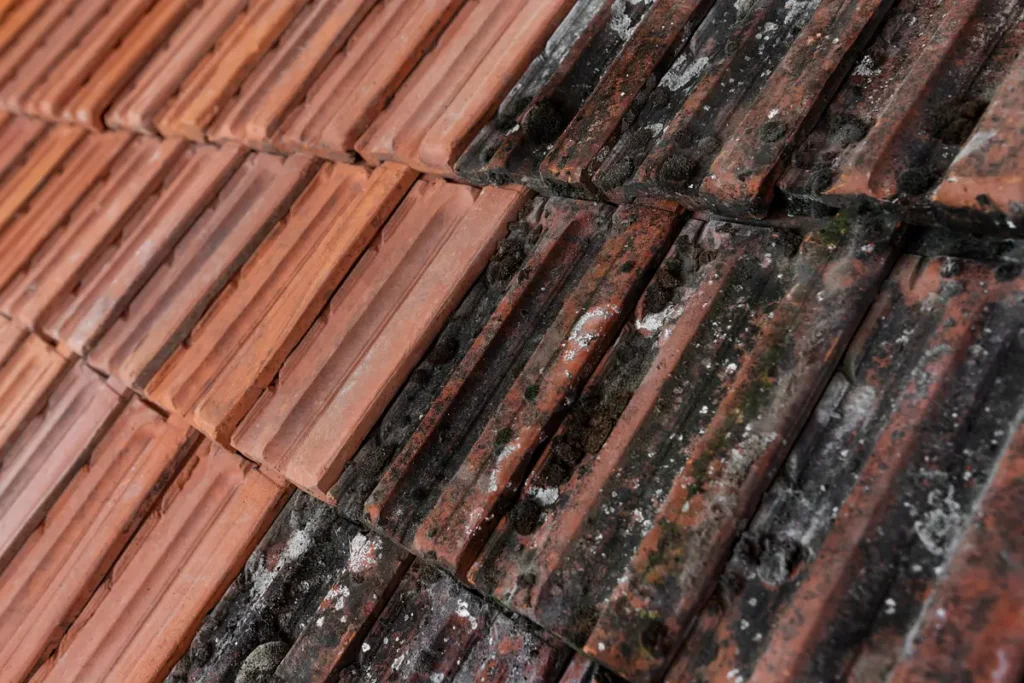
Mold on your roof can be a silent yet destructive presence. By understanding the signs, causes, and dangers, you can take proactive steps to protect your home. Regular maintenance and timely interventions are essential in keeping your roof—and your home—safe, healthy, and beautiful.
For those unsure or uncomfortable with DIY solutions, reaching out to roofing professionals can ensure that any mold issues are handled efficiently and effectively. Remember, a small investment in prevention can save you from costly repairs and health concerns down the line.Give our team at Palladium Roofing a call today to protect your roofing system!


